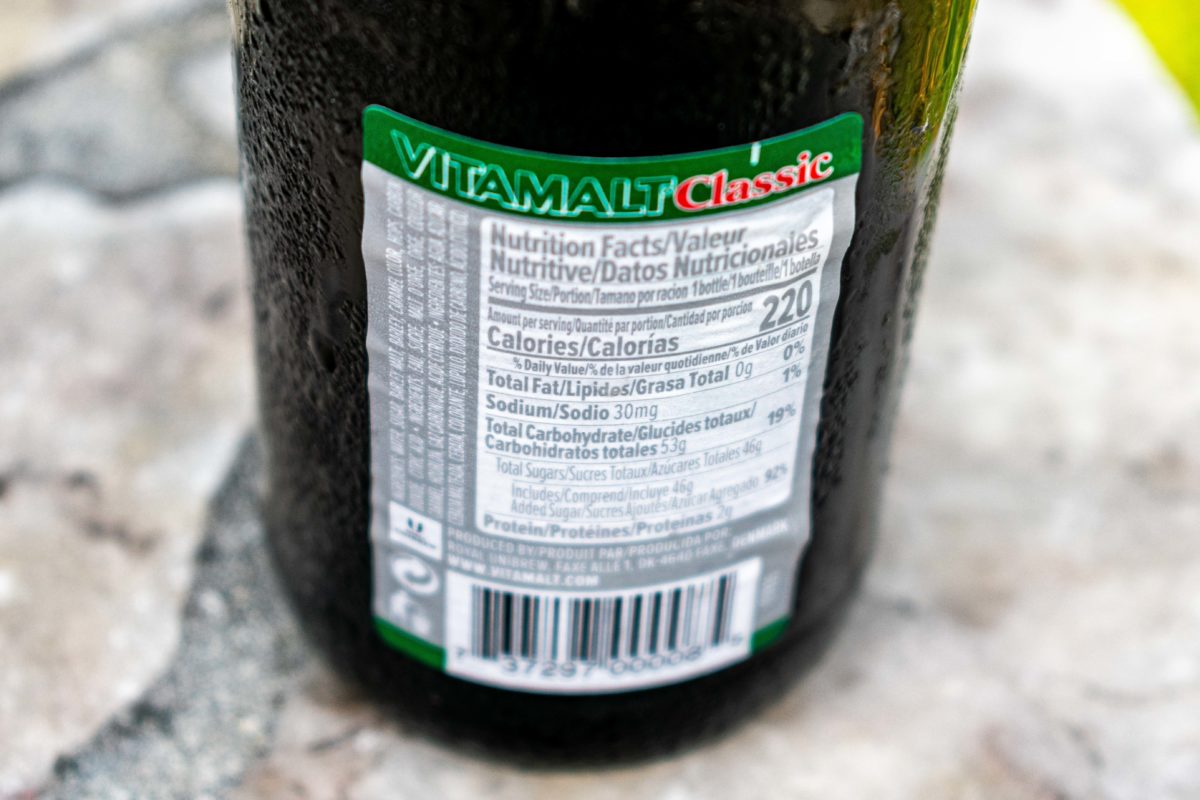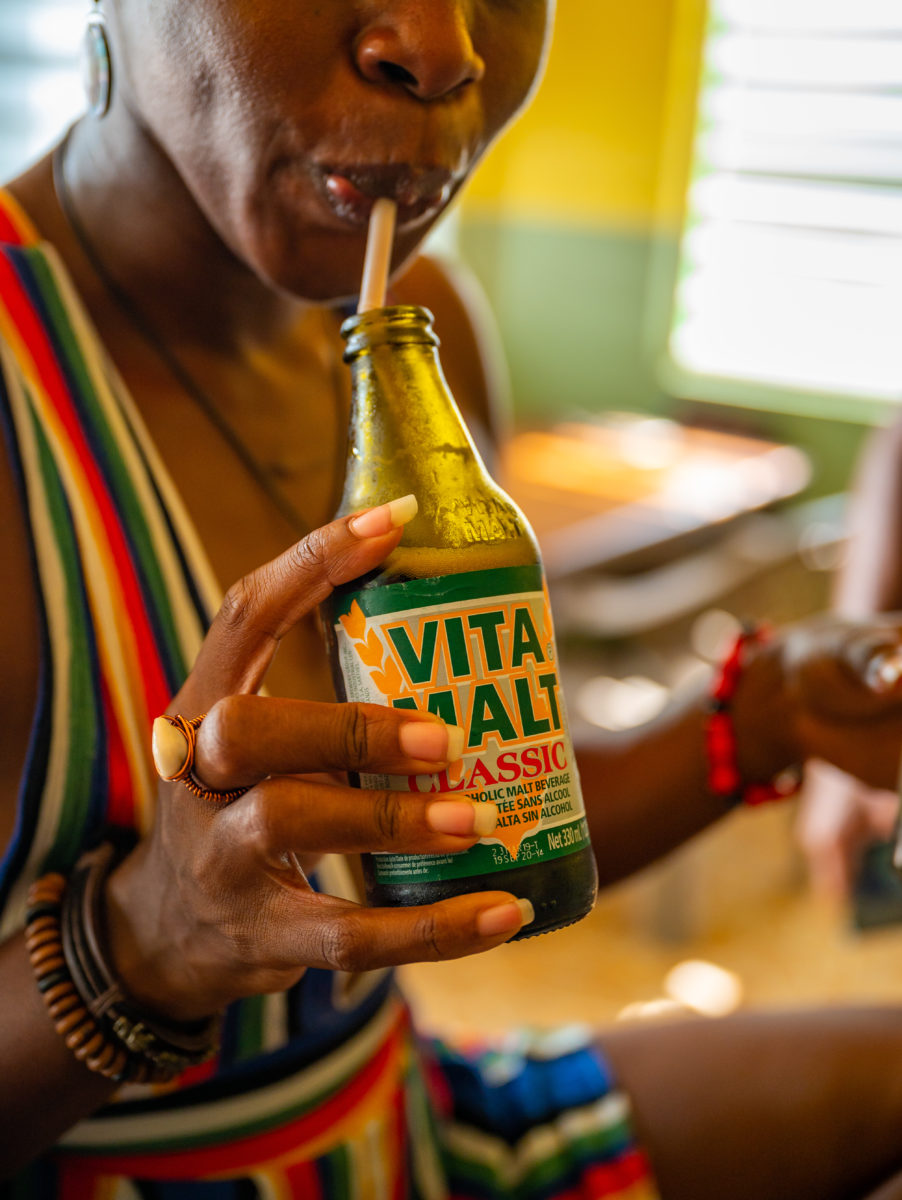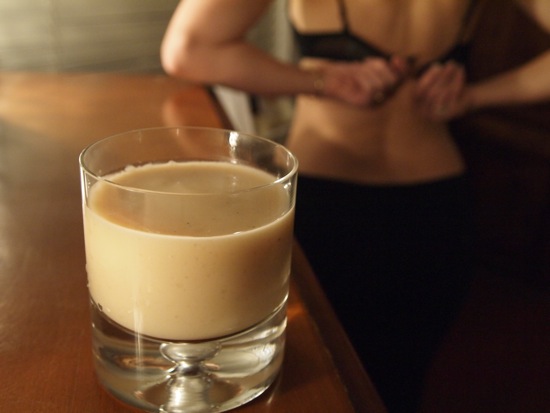Vitamalt – The Most Acquired Taste of the Caribbean
Every culture has them. Unique things people eat and drink that expressly identify said people as hailing from a particular place. The Caribbean has many of its own distinctive examples, of course. None, though, are as equally ubiquitous, loved, and hated as much as Vitamalt.
Throughout all of my travels to 40+ shores across the West Indies, I don’t think I’ve ever landed or dropped anchor anywhere that I could not find a Vitamalt. This stuff is literally everywhere and anywhere you can buy soft drinks in our islands. Spanish islands and countries, Dutch, French, English – seemingly every destination in the Caribbean drinks Vitamalt!
Why? What makes this stuff so popular? (Or not..?) Let’s explore…
What is Vitamalt?
This simple question can yield a surprising array of answers, depending on personal tastes.
For our purposes, though, we’ll put emotions aside and focus on the nitty-gritty.

Vitamalt is a non-alcoholic malted beverage. As such, it’s loaded with sugar. LOTS OF SUGAR. A whopping 46 grams of the seductive sweetener are crammed into the typical 11.2 fluid ounce bottle of Vitamalt.
That’s way more than Coca-Cola or anything else on this most sugary sodas list.
On the “Nutrition Facts” label there’s even a 92% next to “Added Sugar.” NINETY-TWO-PERCENT!!
Is it any wonder some of my friends call this malt “diabetes in a bottle?”
About That Salt, Though…
Also on the nutrition label: “Sodium/Sodio 30mg.” Also not so good.
Diet soft drinks tend to have a lot more sodium content than regular sodas. The 30mg’s in Vitamalt, for instance, are about half of what you’ll find in your typical diet cola. It’s also nowhere near the salt levels in a Dr. Pepper.
Still, 30mg’s isn’t anything to ignore, especially when you consider that Malta India only has 16mg of sodium in a comparatively larger bottle.
Just something to consider, most notably if you have high blood pressure issues.
Is There Anything Besides Sugar and Salt In The Bottle?
Vitamalt being a malt, of course, requires that it contains more than just sugar and salt.
Editor’s note: In case you didn’t know, malt soft drink beverages are produced in much the same fashion, and utilizing the same ingredients, as beer. The big difference, though, is that the fermentation process employed to convert sugars derived from grains into alcohol is left out. So, no, you can’t get drunk drinking Vitamalt… at least not on its own.
Hops, barley malt, and caramel coloring, among other delights, help this bottle tip the scales at 220 calories. This yields a super-sweet and super-dark soft drink that’s also somehow supposedly super good for you…?
Health Benefits of Vitamalt
Indeed, like many of the most popular liquid consumables in our mucho-macho West Indian society, Vitamalt is said to give men a kick where it counts! Mixed in with all that sugar, salt, hops, and barley is, apparently, a rather healthy helping of essential minerals and vitamins. Chief among them: B vitamins, a noted natural libido booster.

Vitamalt enhances energy levels outside the bedroom as well. I’ve known it as an energy drink since my childhood days competing as a member of the St. Croix Dolphins Swim Team.
Vitamalt remains active in sports sponsorships across the Caribbean today. Most any cycling race, track and field event, basketball game, or soccer arena will have Vitamalt signs, flags, or other sorts of branding materials.
This heritage of sports, health, and vitality extends way back to Vitamalt’s very origins.
Vitamalt History
As closely associated with the Caribbean as it is, Vitamalt is actually not from the region at all. Ceres Brewery (established 1856 in Denmark) started exporting the drink’s precursor to the Caribbean in 1960.
It wasn’t until 1978, though, that the brand name Vitamalt started appearing on West Indian store shelves. (This explains the “1978” on the modern label.) The iconic bottle design debuted at the same time. Emblazoned on it was a claim no health-conscious consumer could ignore…
Doctors recommend Vitamalt which is used extensively by athletes, nursing homes, hospitals and similar establishments.
Now, who could deny so perfect a panacea for… err… ummm… hmmm…
It’s not like the label expressly stated what, exactly, said athletes, nursing homes, hospitals, and similar establishments were using Vitamalt for. Household cleaning liquid? Shampoo? I mean, it could’ve been anything, right?
Note: See how Vitamalt continues to espouse its good health and vitality benefits in this 2019 promo video…
Okay, jokes aside, people obviously got the gist of what Vitamalt was trying to say. Sales skyrocketed and the brand expanded to all corners of the Caribbean. Grenada, St. Kitts, Guadeloupe, Antigua, St. Vincent, Barbados, Martinique, St. Lucia, The Bahamas. By the end of the 1990s, Vitamalt was available most anywhere you might roam in the Caribbean.
But, should you try it…?
Vitamalt Classic Taste Test
As you may have noticed in the video above, Vitamalt now comes in five different varieties – Classic, Ginseng, Ginger, Acai, and Less Sugar. Eventually, we’ll taste and review them all right here. To kick things off, though, let’s have a sip of the flagship malt…
- Vitamalt Classic – On the nose, Vitamalt Classic carries a rich malty scent similar to my beloved Malta India. The sweetness shines well above the barley and hops. On the lips, there’s a tinge of bitterness that quickly fades. In its place is all that sugar. It goes right to my head. The overall mouthfeel is heavy; almost like a light syrupy. It coats the tongue and throat like a thin cold medicine. The aftertaste lingers in kind, though not in a manner that begs me to take another sip too quickly. Definitely an acquired taste.
Many a West Indian friend (and likely some family members too) will shake their heads, or turn away in shame. They’ll cut me some stink eye, steups, or otherwise cast me out. My membership in good standing in the West Indian community will, no doubt, come into question.
I, you see… am just… not really… a big fan… of Vitamalt.
There, I said it! I’m not proud of it, but what’s done is done.
If you like a thick dark beer that’s really, really sweet, but doesn’t contain alcohol, though, then Vitamalt Classic may be perfect for you.
Here’s hoping that one of the four other Vitamalt flavors works for me. Stay tuned as I find and try them in the weeks to come!






